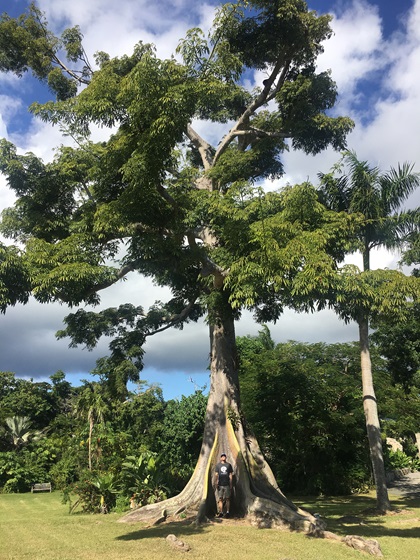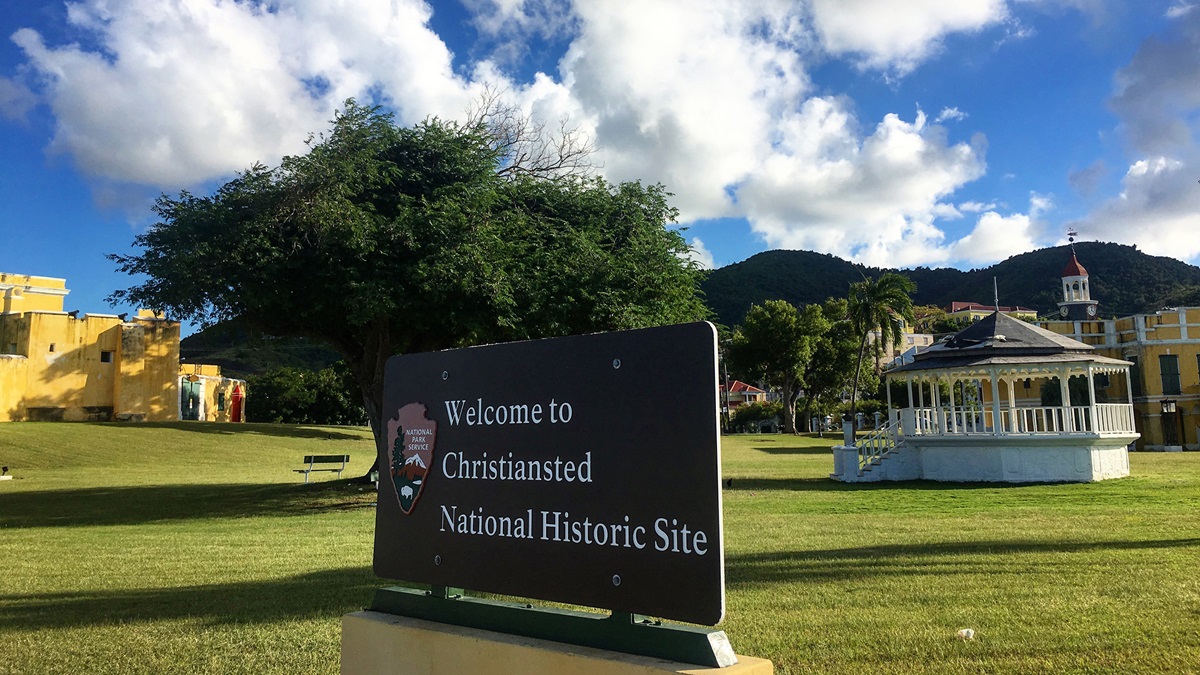Underwater, land adventures beckon pilots to beautiful island
St. Croix, US Virgin Islands
The promise of visiting three distinct National Park Service units on one U.S. Virgin Island brought us to St. Croix to celebrate our twentieth wedding anniversary. The excursion to Buck Island Reef National Monument motivated us to block a full day and schedule in advance as the one must-do activity on an otherwise carefree first trip to St. Croix.
The day spent exploring one of America’s few protected marine monuments did not disappoint. To get to Buck Island, about 1.5 miles off St. Croix’s north shore, you need to use an official concessionaire or get a National Park Service permit for a private vessel. We did a full-day sail with Big Beard’s Adventure Tours that took us first to the 176-acre uninhabited island’s Turtle Beach, where we had just enough time to walk the picturesque stretch of white sand looking for turtle tracks.
While our Buck Island trip was a beautiful and relaxing adventure, there are diverse adventures all over the largest of the three U.S. Virgin Islands. From the underwater park to the highest peak, we sampled nearly all the island offers: hiking, snorkeling, sailing, kayaking, beach-hopping, visiting St. George Village Botanical Garden, and exploring the island’s twin cities of Christiansted and Frederiksted, including a Taste of Twin City walking tour, a fun afternoon combining samples at local restaurants with a history lesson.
You’ll want to rent a Jeep to explore the island—28 miles long and 7 miles wide. It was hard to tell if road conditions were caused by the double punch the island took in 2017 when Category 5 Hurricane Irma hit in early September followed by Maria two weeks later, the traffic of all the repair work being done since then, or if this is the regular state of some of the roads. We suspect it is a mixture.
As AOPA reported in December 2018, Bohlke International Airways, a St. Croix-based charter service and FBO at Henry E. Rohlsen Airport, is fully operational. While a few resorts, hotels, and restaurants have yet to reopen, there were no services or activities unavailable to us during our weeklong stay.

While not every resort on St. Croix has returned, one that remained and even opened its doors to relief workers during hurricane recovery is The Buccaneer. Now in its seventy-second year, it is the longest running resort in the Virgin Islands and is still owned by the Armstrong family. During a weekly cocktail party at the property’s historic sugar mill, Elizabeth Armstrong welcomes guests to the destination beach, tennis, and golf resort that her grandparents opened in 1947. With 138 rooms spread out on 340 waterfront acres, this is as mega-resort as St. Croix gets.
Many smaller properties are available as well, and as with the other U.S. Virgin Islands, hundreds of private homes and cottages can be rented. We chose a central location so we could explore the entire island without long drives—from dry cactus in the east to a lush rain forest in the west.
We hiked to the top of Mount Eagle, the highest spot (1,160 feet) on the island, for breathtaking panoramic views. We visited St. Croix’s two other National Park Service sites. Christiansted National Historic Site has five historic buildings, including Fort Christiansvaern that was completed in 1749 to protect the harbor of the new capital of the Danish West Indies. The site shares information on the Danish era of occupation of the Virgin Islands (1734 to 1917).
We explored the Salt River Bay National Historical Park and Ecological Preserve in a pedal kayak with a guided Virgin Kayak Tour. This is the area where Columbus landed in 1493, and it’s now one of just a few bioluminescent bays in the world. While the timing of our visit didn’t align with the phase of the moon to see dinoflagellates, we did get to see comb jellies, which emit a blue light.
Our favorite beach for snorkeling was Issac Bay on the far east end of the island. The secluded bay is a 15-minute hike from the parking lot, which meant we had the half-mile-long beach to ourselves much of the morning we spent there. The area was once slated for residential development, and today The Nature Conservancy protects it as the Jack and Issac Bay Preserve. It’s an important nesting area for green and hawksbill turtles.
Another area important to turtles was our favorite overall beach: Sandy Point National Wildlife Refuge, which is managed by the U.S. Fish and Wildlife Service. The water here is not ideal for snorkeling, but you’ll see lots of people here playing in the water or sand or walking the nearly two-mile-long beach, said to be the longest continuous beach in the U.S. Virgin Islands. The refuge is open from 10 a.m. to 4 p.m. on Saturdays and Sundays or on days when cruise ships are docked at nearby Frederiksted. Because Sandy Point is a critical nesting habitat for the endangered leatherback sea turtle, it is closed to the public from April through August.











